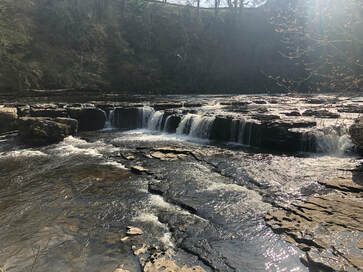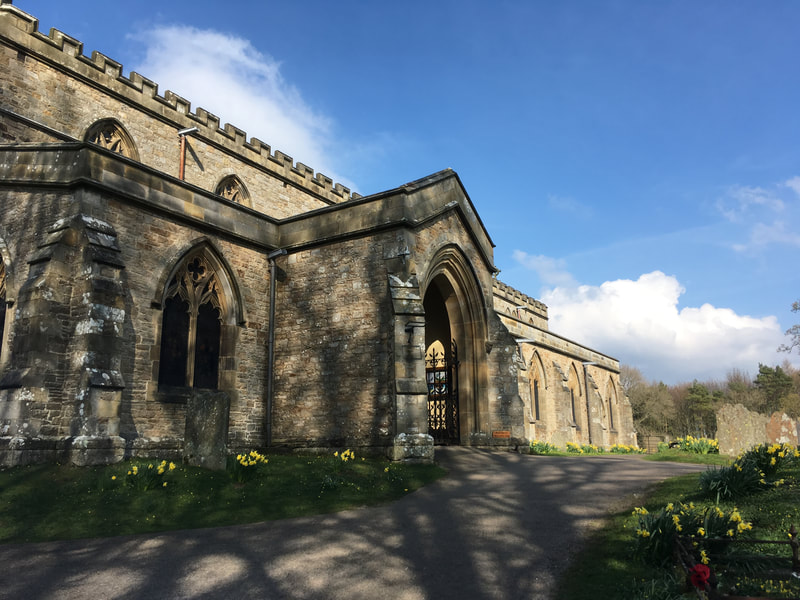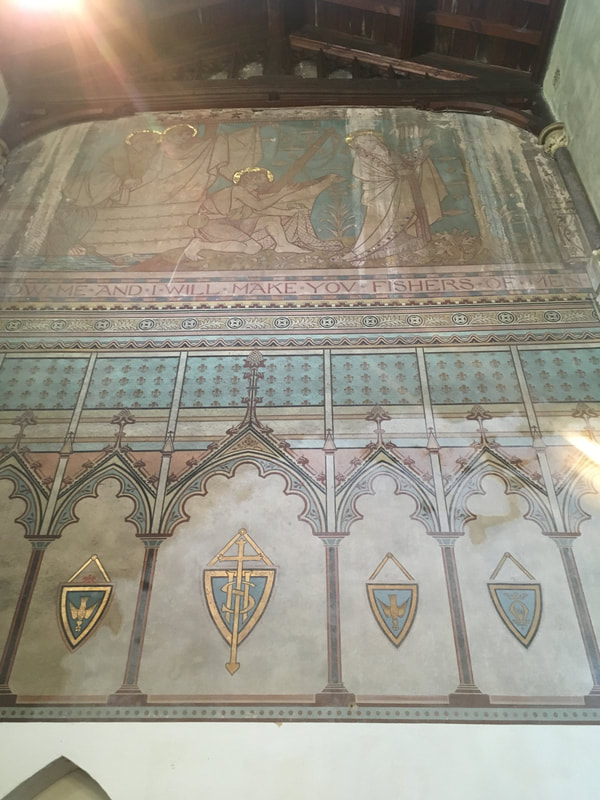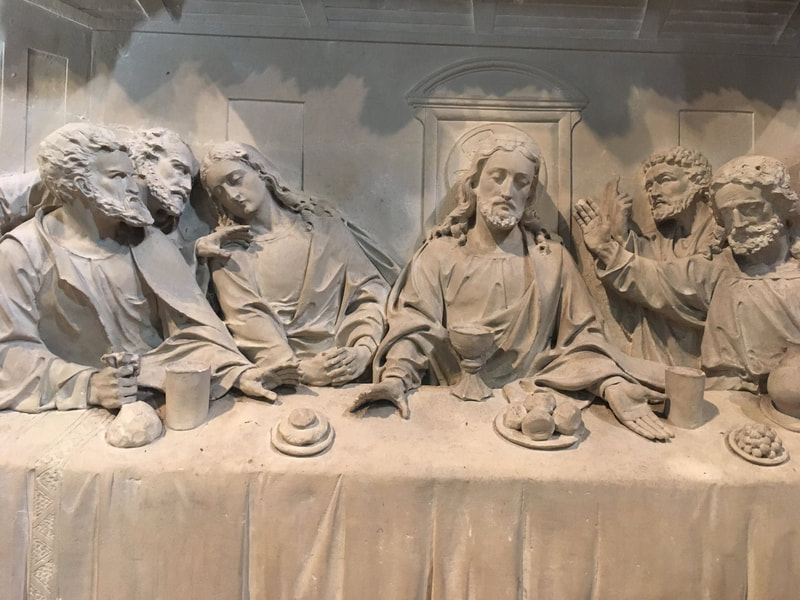
It's said that Wordsworth visited Aysgarth Falls and Turner sketched the Falls. Today's visitors certainly flock there to photograph them. Most take similar views, but it's very easy to move on and see the Falls from different angles. There's one area just above the upper Falls where the River Ure is broad, calmer and easily accessible so you can easily paddle or swim in Summer (or Winter if you're Stuart Gledhill)
The three steps of the Falls are made from limestone rock sandwiched with shale. The steps were formed as water eroded the softer shale. Sometimes the limestone rock breaks and forms big steps over which the water tumbles. The Yorkshire Dales may be quite a distance from the sea now but 300 million years ago the area around Aysgarth Falls was under a tropical sea, filled with creatures. If you go into the small Yorkshire Dales National Park Centre by the car park you can learn about the fossils and even coral to be found by the Falls.
Close by is Freeholders' Wood Millennium Trail where artist Vivien Mousdell created four carved art works - there are easy paths to wander along in the woods. They're particularly pretty in Spring when the primroses and wood anemones flower. You might want to suggest young children walk through extra quietly in case they can see the roe deer. There's also a thriving dormice population here but they're nocturnal so you're unlikely to see them.

If you cross the road you'll see the imposing building of Yore Mill, first a cotton mill, then a woollen mill and now awaiting its next role in life.
Walk a little up the hill and you'll discover the true treasure inside St. Andrew's Church. Can a churchyard be beautiful or does its ultimate purpose preclude that? St. Andrew's churchyard is apparently over 4 acres, one of the largest in England. It's not just large, it's very pretty, gently undulating, with several old trees, and flowers.

The brightly coloured (make sure you switch on the light) carved wooden Rood Screen was apparently carried by 20 monks the 12 miles from Jervaulx abbey at the time of the Dissolution of the Abbeys. Look carefully and you'll see some fascinating details. Such paintings and carvings were used at a time when most of the population was illiterate, and tell a story, warning of the dangers of sin.
This beautiful and imposing piece commands most of your attention but look to your left and you'll see an ornate reredos in pale Caen stone, with a carving of the Last Supper. The detail on this is incredible - each finger nail, fold of the table cloth, Judas' money bag.
I hope if you visit you also get to meet the Friendly Farmer (he was telling too many stories for me to ask his name), a lovely man who told of being taken by surprise by the birth of some extra lambs this week, the spot in the graveyard he and his wife have reserved, and how an auspicious thunderstorm determined the location of the new loos. He oozed contentment with life, and love for his local church. Thank you to him.




 RSS Feed
RSS Feed
